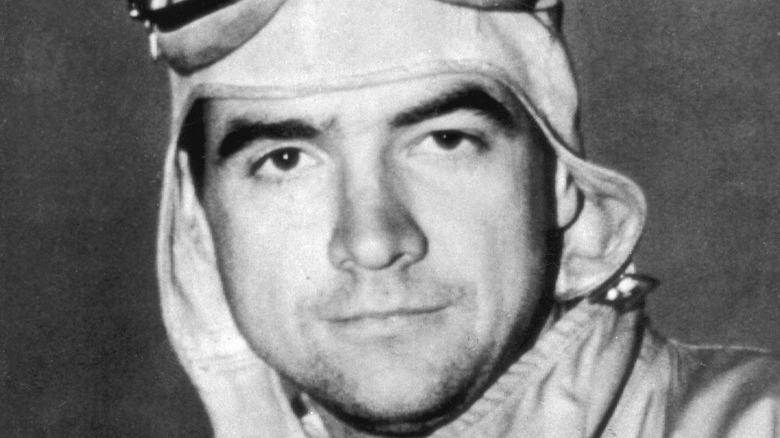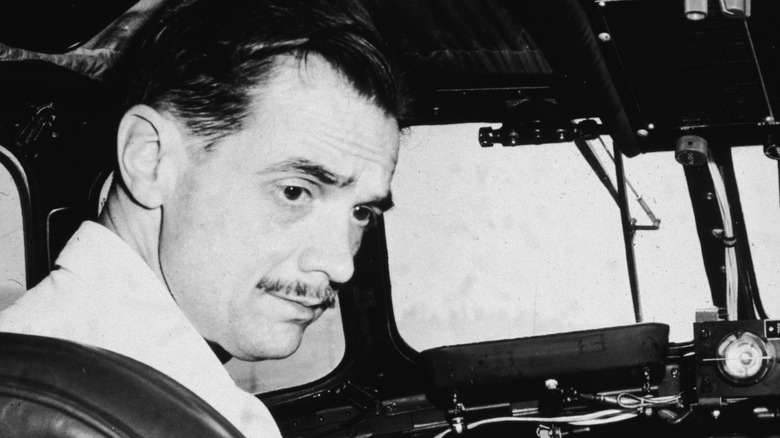Howard Hughes' Tragic 1946 Plane Crash Explained
Most people recall the soaring life and personality of Howard Hughes from Martin Scorsese's 2004 biopic "The Aviator," but much about the late arial frontiersman gets lost in the clouds. Hughes' contributions to flight and aviation are invaluable, and his legacy is indeed admirable, but one particular instance and its aftershock substantiates a significant part of his tragic story.
In 1946, while Hughes was operating an experimental spy plane for the United States Army over Los Angeles, the machine's engines failed and the pilot found himself in lethal jeopardy (an oil leak that caused the propellers to reverse their pitch proved to be the source of the catastrophe). In a desperate attempt to buffer the effects of an inevitable crash landing, Hughes aimed the plane toward the Los Angeles's Country Club golf course, but he overshot and wound up crashing into a nearby Beverly Hills neighborhood that destroyed the aircraft and three homes. Luckily, the accident didn't result in any fatalities (per All That's Interesting).
After the crash
Hughes' miraculous deflection of death was witnessed by Marine Sgt. William Lloyd Durkin, stationed at the El Toro Marine Base, and Capt. James Guston. An LA Times publication reported that after watching the crash, the two uniformed men rushed to the scene and pulled Hughes from the burning rubble before the flames could engulf him. However, his troubles were far from over, as the crash proved to be a catalyst for many hardships to follow.
Hughes suffered tremendous injuries including a collapsed lung, a crushed chest, broken ribs, a shattered collar bone, and multiple third-degree burns. He became dependent upon opiates throughout his recovery that severely eroded his long-term health. When he died, Howard Hughes was a staggering 90 lbs, and there were several broken needles lodged in his arm from self-administered morphine injections. Nonetheless, he continued to innovate and earned a place in aviation history, setting the foundation for modern aviation as it exists today (via All That's Interesting).

